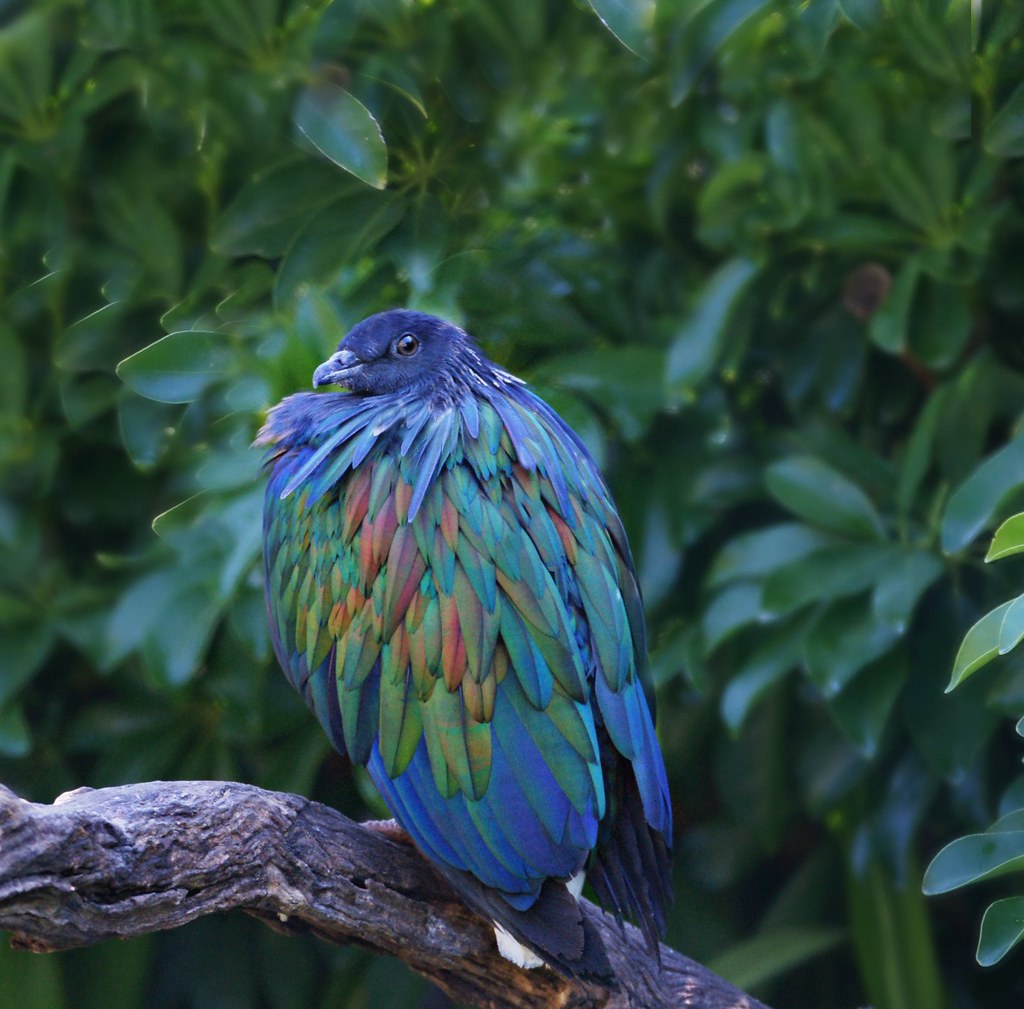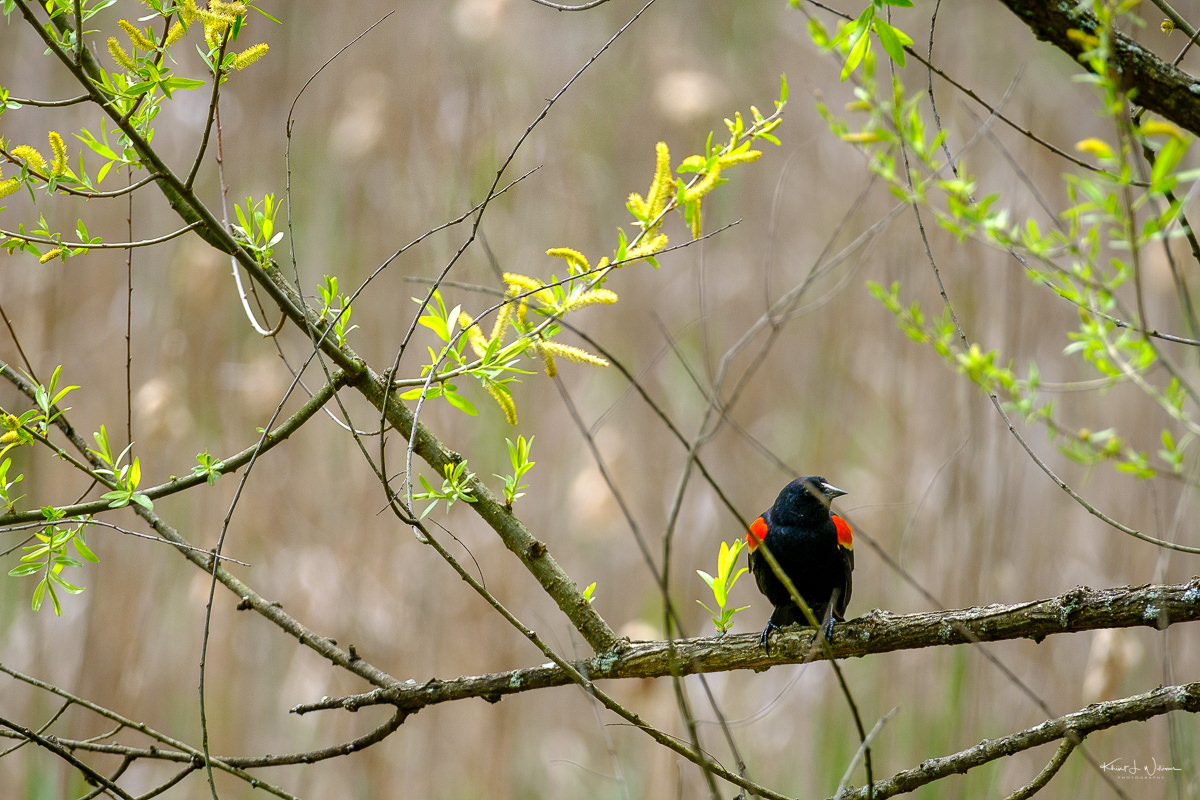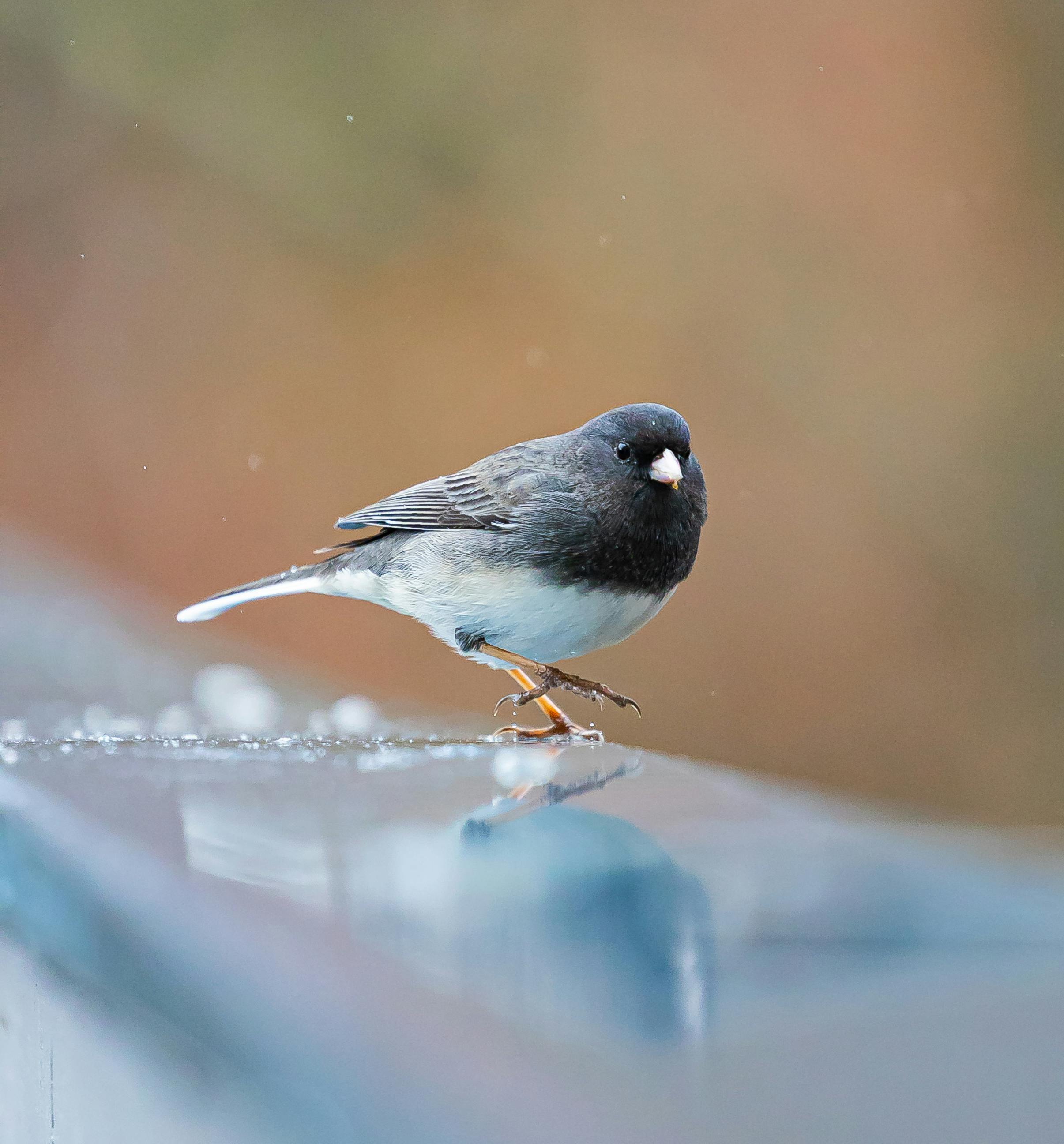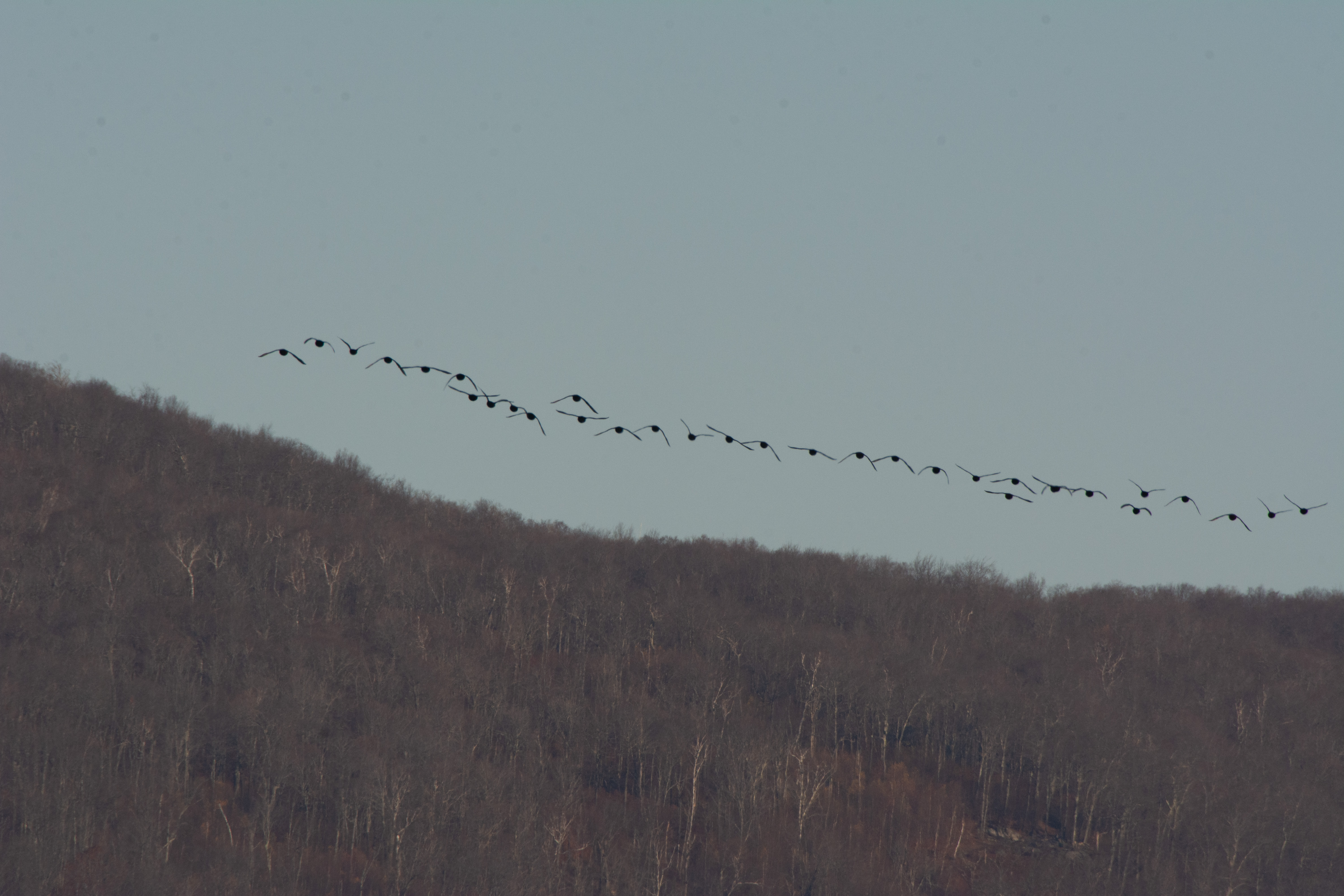Introduction

Birds are renowned for their captivating array of sounds, ranging from melodic songs to unique calls. However, there exists a fascinating subset of bird vocalizations that mimic an unexpected creature—the rattlesnake. The resemblance between certain bird sounds and the distinctive rattle of a venomous snake has captivated bird watchers and researchers alike. In this blog post, we will delve into the intriguing world of bird sounds that resemble a rattlesnake and explore its relevance to bird enthusiasts.
Understanding and interpreting different bird sounds is essential for bird watchers to comprehend avian behavior, communication, and species recognition. The discovery that some birds produce vocalizations reminiscent of a rattlesnake adds surprise, intrigue, and highlights the adaptability and creativity of avian vocalizations.
Exploring why certain birds mimic the sound of a rattlesnake provides valuable insights into avian behavior and ecology, shedding light on the interplay between predator-prey relationships, mating rituals, and survival strategies. Recognizing bird sounds resembling a rattlesnake enhances birders’ experiences, enabling them to identify and appreciate these unique vocalizations with greater accuracy.
Throughout this blog post, we will explore the diverse types of birds that can sound like rattlesnakes, their geographical distribution, the reasons behind these vocalizations, and practical tips for bird watchers to identify and listen for these intriguing sounds. By examining specific examples and interactions between humans and birds that sound like rattlesnakes, we aim to provide a comprehensive understanding of this captivating avian phenomenon.
Let us embark on a journey into the world of bird sounds that resemble a rattlesnake, where the unexpected harmony between birds and serpents captivates our imagination and enriches our bird-watching experiences.
Types of Birds

Birds that produce sounds resembling rattlesnakes are diverse in their physical characteristics and behaviors. Here are two notable examples:
2.1 The Greater Roadrunner (Geococcyx californianus)
The Greater Roadrunner is a large bird known for mimicking the sound of a rattlesnake. With a length of approximately 20-24 inches, it possesses a slim body, long tail, and distinctive crest on its head. Its brown and black plumage provides effective camouflage in arid habitats. This bird’s appearance aids in its adaptation to the desert environment.
The Greater Roadrunner produces a rattling, cooing call that closely resembles a rattlesnake’s rattle. This vocalization serves as a means of communication and territorial defense among roadrunners.
2.2 The Eastern Screech-Owl (Megascops asio)
The Eastern Screech-Owl, a small owl species, emits a sound reminiscent of a rattlesnake. Measuring around 8-10 inches in length, this owl possesses prominent ear tufts that can be raised or lowered based on its mood or level of alertness. Its plumage varies in color, ranging from gray to reddish-brown, with mottled patterns for camouflage.
The Eastern Screech-Owl’s vocalization closely resembles the rattlesnake’s rattle, particularly its trilling or whistling sound. This unique ability allows the owl to communicate and establish its presence within its habitat.
These are just two examples of birds capable of producing sounds similar to rattlesnakes. The avian world is rich in diversity, with various species showcasing intriguing adaptations and vocalizations. Exploring the physical characteristics and behaviors of these birds provides bird watchers with a deeper appreciation for the intricacies of avian communication and adaptation to their environments.
Distribution of Birds that Sound like Rattlesnakes
![]()
Birds that mimic the sound of rattlesnakes can be found in various regions around the world. Notable examples exist in North America, tropical regions, and even Australia.
North America
The southwestern United States, including Arizona, New Mexico, and Texas, is home to a variety of bird species known for imitating rattlesnake sounds. The presence of rattlesnakes in these areas likely influences the development of this vocal mimicry. Birdwatchers in these regions can encounter fascinating species that add an element of surprise to their birding experiences.
-
Northern Mockingbird: Renowned for its ability to mimic rattlesnake sounds, the Northern Mockingbird (Mimus polyglottos) exhibits an incredible repertoire of vocal imitations, blending seamlessly with its environment.
-
Curve-billed Thrasher: Found in the southwestern United States, the Curve-billed Thrasher (Toxostoma curvirostre) produces a rattlesnake-like sound, often deceiving unsuspecting listeners.
-
Cactus Wren: The desert-dwelling Cactus Wren (Campylorhynchus brunneicapillus) skillfully mimics the sound of a rattlesnake, blending in with the desert soundscape.
Tropical Regions
Central and South America host bird species capable of mimicking rattlesnake sounds due to their diverse ecosystems.
-
Rufous Motmot: Found in the tropical forests of Central and South America, the Rufous Motmot (Baryphthengus martii) imitates the rattling sound of snakes for territorial defense and communication.
-
Choco Tinamou: The Choco Tinamou (Crypturellus kerriae) found in the Chocó rainforest region of western Colombia and northwestern Ecuador, mimics rattlesnake sounds as a form of camouflage or territorial display.
Other Regions
Although most birds imitating rattlesnake sounds are found in North America and tropical regions, isolated cases of similar vocal mimicry exist in other parts of the world.
- Eastern Whipbird: In Australia, the Eastern Whipbird (Psophodes olivaceus) produces a distinct vocalization resembling the crack of a whip, reminiscent of rattlesnake sounds.
The geographical distribution of birds that sound like rattlesnakes spans various regions worldwide, captivating birdwatchers with their remarkable mimicry.
Reasons for Mimicking Rattlesnake Sounds

Birds that mimic the sound of a rattlesnake do so for various reasons, primarily as a defense mechanism and for territorial defense.
-
Defense Mechanism: By imitating the sound of a rattlesnake, birds create a sense of fear or danger to potential threats, deterring predators from approaching or attacking.
-
Territorial Defense: Some bird species use the rattlesnake-like sound to establish and defend their territory from other birds. It serves as a warning to potential intruders, signaling that the area is already occupied.
Not all bird species imitate rattlesnake sounds for defensive purposes. In some cases, it may be a form of vocal communication within their own species.
- Courtship Displays: Male birds may use rattlesnake-like sounds during courtship displays to attract mates or assert dominance over other males. The sound serves as a signal of strength and fitness.
The ability to mimic rattlesnake sounds is a learned behavior for many bird species. Young birds acquire this skill through vocal learning, imitating sounds they hear from adults or other individuals in their environment.
The specific mechanisms behind how birds produce rattlesnake-like sounds can vary between species. Some birds achieve this mimicry through specialized vocalizations, while others incorporate elements of their natural vocal repertoire.
Overall, the ability of birds to mimic the sound of a rattlesnake showcases their diverse strategies for survival and communication in their natural environments.
Listening Tips – How to Identify Bird Sounds Like a Rattlesnake

Birdwatching becomes truly captivating when you can identify birds that produce sounds resembling a rattlesnake. To enhance your birdwatching adventures, here are valuable tips to help you listen for these unique bird sounds:
Research bird species with rattlesnake-like sounds
Start by familiarizing yourself with bird species known for their vocalizations that mimic the sound of a rattlesnake. Examples include the Eastern Towhee, Black-capped Chickadee, and Carolina Wren. Research their habitats and common regions to increase your chances of encountering them.
Familiarize yourself with bird sounds

To accurately identify bird sounds resembling a rattlesnake, familiarize yourself with the unique vocalizations of your target species. Listen to recordings or watch videos showcasing their calls. Pay attention to cadence, rhythm, and pitch. Training your ear will help you identify these distinct sounds in the field.
Consult field guides and online resources

Reputable field guides and online resources focused on bird vocalizations are invaluable references. They provide descriptions, audio samples, and visual representations of bird calls. Look for references to rattlesnake-like sounds in bird descriptions or call notes. Regional field guides can be particularly helpful in narrowing down potential bird species.
Practice active listening
Engage in active listening while in the field to identify bird sounds resembling a rattlesnake. Pay close attention to sounds resembling a rattlesnake’s rattle, focusing on areas where these birds are likely found, such as dense undergrowth or forest edges. Be patient and attuned to subtle variations in calls, as birds may modify their vocalizations based on surroundings or behavior.
Join birdwatching communities and guided tours

Participating in birdwatching communities and guided tours offers valuable learning opportunities from experienced birders. Engage with enthusiasts knowledgeable about identifying bird sounds resembling a rattlesnake. They can share tips, knowledge, and personal experiences, enriching your understanding of these unique vocalizations.
By following these listening tips, you’ll enhance your ability to identify bird sounds resembling a rattlesnake. Remember, practice and patience are key when developing your skills as a birdwatcher. So get out there, explore diverse habitats, and let the captivating melodies of nature guide you on your avian adventures.
Examples – Birds that Sound Like Rattlesnakes

Several bird species possess vocalizations that closely resemble the sound of a rattlesnake. These mimicry calls serve various purposes, from camouflage to territorial displays. Here are three notable examples:
Yellow-billed Cuckoo
The yellow-billed cuckoo (Coccyzus americanus) emits a series of low, hollow-sounding notes that gradually increase in volume, resembling a rattlesnake’s rattle. By adopting this vocalization, the yellow-billed cuckoo blends into its surroundings and potentially deters nearby predators.
Eastern Screech-Owl
![]()
The Eastern Screech-Owl (Megascops asio) produces haunting vocalizations, including a call reminiscent of a rattlesnake. Known as the “bouncing ball” call, it consists of descending whistles with a rhythmic quality similar to a rattlesnake’s rattle. The Eastern Screech-Owl uses this sound for territorial displays and communication.
Black-Capped Chickadee

The Black-Capped Chickadee (Poecile atricapillus) occasionally produces vocalizations that faintly resemble a rattlesnake’s rattle. Its well-known “chick-a-dee-dee-dee” call can acquire a dry, raspy quality resembling the sound. Although not as pronounced as in other species, this characteristic call adds to the acoustic diversity among birds that mimic rattlesnakes.
These examples highlight the remarkable ability of certain bird species to imitate rattlesnake sounds. By utilizing mimicry techniques, birds enhance their survival strategies, blend into surroundings, and communicate effectively within ecosystems. Birdwatchers find joy in encountering these fascinating creatures and appreciating the intricate vocalizations that contribute to their unique identities.
Human Interaction with Birds that Mimic Rattlesnakes

Birds that imitate the sound of rattlesnakes elicit various reactions and interactions from humans, shedding light on the impact of these vocalizations.
Startle and Alarm
Encountering a bird mimicking a rattlesnake can startle and alarm individuals, triggering a reflexive response due to the innate caution humans have around potential threats like snakes. This reaction is common among those unfamiliar with the phenomenon or the bird’s mimicry abilities.
Appreciation of Natural Phenomenon
Birdwatchers and nature enthusiasts find the experience of birds mimicking rattlesnakes fascinating and exciting. These individuals appreciate the complexity and diversity of bird vocalizations, showcasing the adaptability and mimicry skills of certain bird species.
Educational Opportunities
Birds that mimic rattlesnake sounds offer educational opportunities. Conservation organizations, birdwatching groups, and nature centers can utilize these birds to raise awareness about avian vocalizations and the importance of protecting bird habitats. Sharing information about these birds and their mimicry fosters a deeper appreciation for the natural world and bird communication.
Cultural Beliefs and Folklore
In some cultures, birds that sound like rattlesnakes hold cultural significance or feature in folklore, providing cultural context and enhancing human interaction with these birds. Exploring these connections deepens understanding of the relationship between humans and birds that mimic rattlesnake sounds.
In conclusion, human interactions with birds mimicking rattlesnakes range from initial startle to appreciation, educational opportunities, and cultural significance. Studying these interactions enhances our understanding of the complex relationship between humans and the avian world, enriching our experience of the natural environment.
Conclusion

In this blog post, we explored the fascinating world of bird sounds mimicking rattlesnakes. Let’s recap the main points discussed and draw a conclusion about which bird species mimic rattlesnakes.
Throughout the article, we learned that certain bird species possess remarkable mimicry abilities, imitating sounds from their environment, including the distinctive rattle of a rattlesnake. These avian impersonators leave unsuspecting listeners puzzled and intrigued.
Among the bird species known for mimicking rattlesnake sounds, the Eastern Whip-poor-will and the Yellow-billed Cuckoo stand out. These North American species not only mimic the rattlesnake sound but also have unique physical characteristics and behaviors that contribute to their camouflage and survival strategies.
The reasons behind this mimicry behavior are multifaceted. While motivations may vary, a common explanation is self-defense. By imitating a venomous snake, birds deter potential predators or competitors from approaching their territory. The mimicry may also attract mates or establish dominance within their social groups.
The evolutionary significance of this mimicry behavior is worth considering. Birds successfully mimicking rattlesnake sounds may have gained a competitive advantage in their ecological niche, enhancing their survival and reproductive success.
In conclusion, bird species that mimic rattlesnakes demonstrate remarkable abilities in the avian world. Through their imitations, these birds navigate their ecosystems, utilizing sound for communication, defense, and reproduction. As we delve deeper into the study of bird vocalizations, we uncover the intricacies of their mimicry repertoire, adding wonder to the captivating world of birds and their abilities.
Frequently Asked Questions
1. What bird sounds like a rattlesnake?
The Eastern Screech-Owl is a bird species that produces vocalizations reminiscent of a rattlesnake. Its unique “bouncing ball” call consists of descending whistles with a rhythmic quality similar to a rattlesnake’s rattle.
2. Why do some birds mimic the sound of a rattlesnake?
Birds mimic the sound of a rattlesnake for various reasons. One primary purpose is self-defense, as the mimicry creates a sense of fear or danger, deterring potential predators. Some bird species also use rattlesnake-like sounds for territorial defense or courtship displays.
3. Where can I find birds that mimic rattlesnake sounds?
Birds that mimic rattlesnake sounds can be found in different regions worldwide. Notable examples exist in North America, particularly the southwestern United States, as well as tropical regions in Central and South America. Certain bird species in Australia also produce vocalizations resembling rattlesnake sounds.
4. How can I identify bird sounds that resemble a rattlesnake?
To identify bird sounds resembling a rattlesnake, it’s essential to familiarize yourself with the unique vocalizations of target species. Research bird species known for their mimicry abilities, listen to recordings or watch videos showcasing their calls, and pay attention to cadence, rhythm, and pitch. Consulting field guides, online resources, and joining birdwatching communities can also aid in accurate identification.
5. What is the purpose of birds mimicking rattlesnake sounds?

The purpose of birds mimicking rattlesnake sounds varies. It primarily serves as a defense mechanism, deterring potential threats from approaching or attacking. Additionally, some bird species use rattlesnake-like sounds for territorial defense, courtship displays, or communication within their own species. The mimicry behavior enhances their survival strategies and reproductive success

Leave a Reply